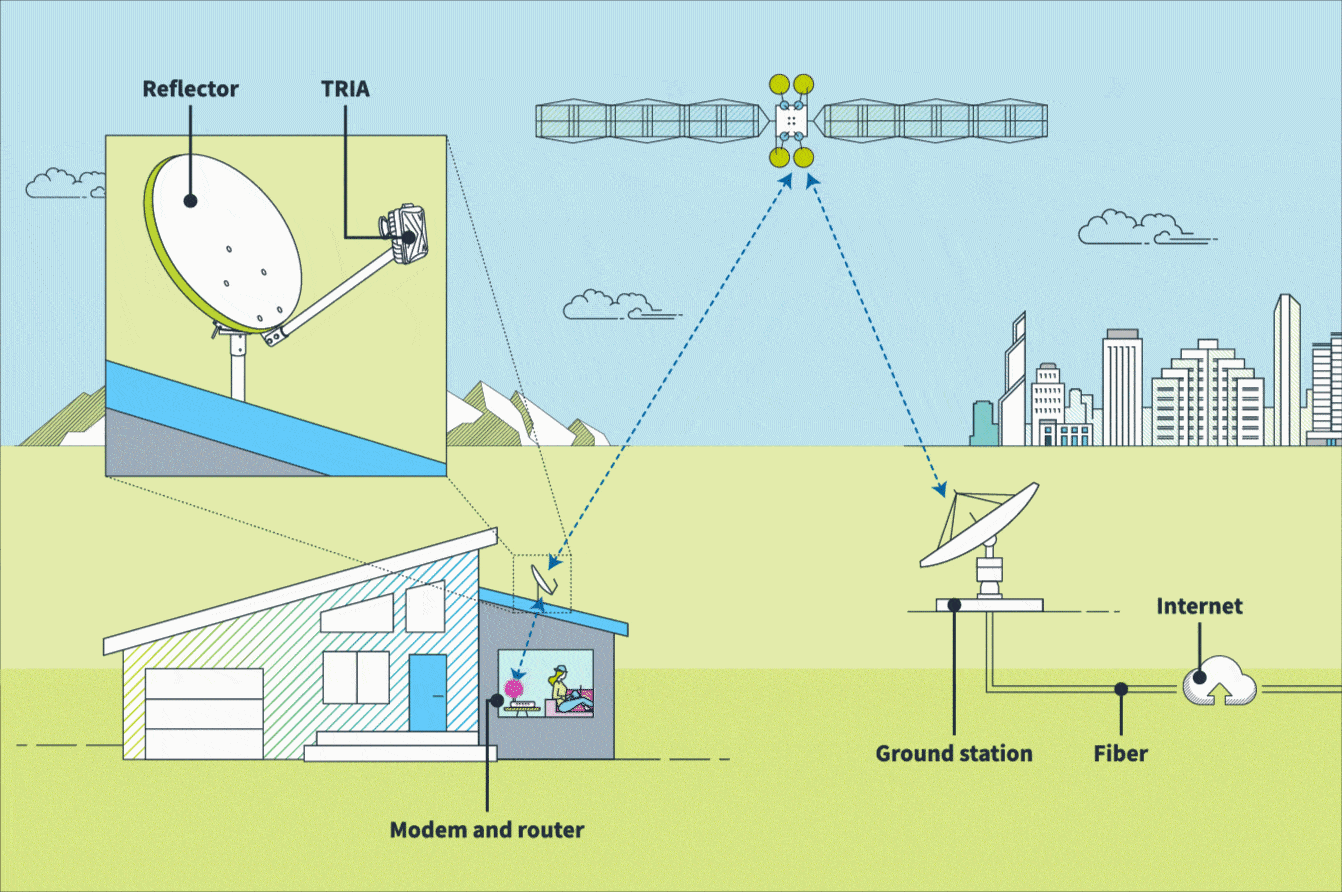Satellite Internet Evolution: Transforming Communication and Connectivity
Posted: Fri Jun 21, 2024 1:55 pm

Hey, Explorers!
We hope everyone’s doing well and enjoying their time in the MagicNation community. I'm back again with another exciting topic, So let's get started.
Satellite internet technology is quite a marvel when you think about it. It uses a series of advanced satellites in geostationary orbit that’s about 35,786 kilometers above Earth’s equator.
These satellites are equipped with transponders that receive signals sent from a satellite dish on the ground. Once a satellite receives a signal, it amplifies it and sends it back down to Earth to a different location, such as a network operations center (NOC). The NOC is the heart of the operation, connecting to the broader internet infrastructure and sending data back through the satellite to your dish and then to your modem.
This round-trip journey may sound lengthy, but it happens at the speed of light. The technology behind satellite internet has evolved significantly over the years, with modern satellites capable of providing broadband speeds that rival those of traditional terrestrial connections. The key lies in the frequency bands used for communication; most satellite internet services operate in the Ka or Ku bands, which allow for higher data throughput.
How it works in everyday life, once your home’s dish receives data from the satellite, your modem converts it into a usable signal for your devices. This means you can connect your smartphone, laptop, or smart TV to the internet just as you would with any other type of connection. The beauty of satellite internet is that it doesn’t require extensive ground infrastructure like cables or towers, making it an ideal solution for rural areas where such infrastructure is lacking.

Looking into the future, satellite internet is poised to have a profound impact on human life. With projects like Starlink by SpaceX aiming to launch thousands of small satellites to create a global network, we can expect even more widespread coverage and faster speeds. This could lead to significant advancements in remote education, healthcare delivery through telemedicine, and expanded opportunities for remote work.

Satellite technology continues to improve, we may see a decrease in latency issues that have traditionally plagued this type of internet connection. This means smoother video calls, more responsive gaming experiences, and an overall better user experience. In disaster-prone areas or regions affected by conflict where infrastructure is often damaged or non-existent, satellite internet could provide a resilient means of staying connected.
Now, you might be wondering how this all connects to your phone. It’s simpler than you might think. The modem that receives signals from your satellite dish also acts as a router, creating a Wi-Fi network in your home just like any other internet service. Your phone connects to this Wi-Fi network, allowing you to browse the internet, stream videos, or video call friends without any cables or fiber optics in sight.
Conclusion :
The technology behind satellite internet is not just about connecting us to the web; it’s about connecting us to each other and to opportunities that were previously out of reach. As we look towards the future, we can predict that satellite internet will play an increasingly vital role in shaping our world – bringing education to remote villages, medical advice to isolated communities, and opening up new horizons for businesses and individuals a like. It’s an exciting time for connectivity, and satellite internet is at the forefront of this new frontier.
Source : First, Second
Signing off!
@Mr.Uniquez
@Mr.Uniquez